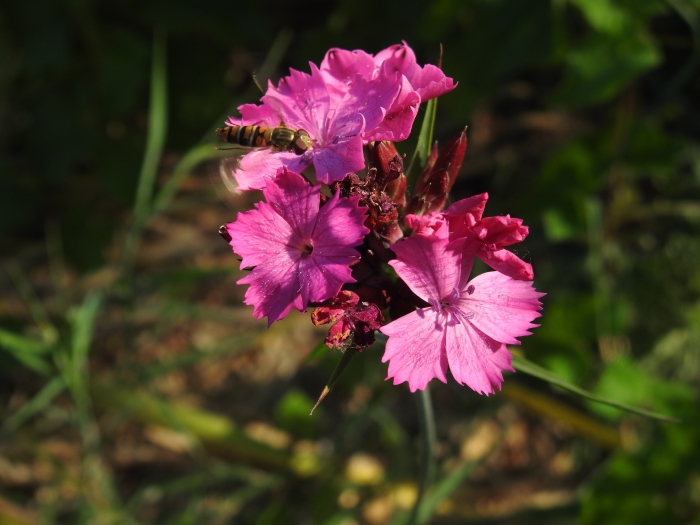Giant Pink
(Dianthus giganteus)
Giant Pink (Dianthus giganteus)
/
/

© Yves Bas
CC BY 4.0
Image By:
© Yves Bas
Recorded By:
Copyright:
CC BY 4.0
Copyright Notice:
Photo by: © Yves Bas | License Type: CC BY 4.0 | License URL: http://creativecommons.org/licenses/by/4.0/ | Uploader: yvesbas | Publisher: iNaturalist |





















Estimated Native Range
Summary
Dianthus giganteus, commonly known as giant pink, is a perennial herb native to the open woodlands and grassy slopes of Romania and the Balkan Peninsula. It can reach up to 3 feet tall and is characterized by its grass-like foliage and large, showy flowerheads that bloom in late spring to early summer. The flowers are typically a deep pink or purple color and are highly attractive to pollinators such as bees and butterflies. The plant forms a clump and can serve as an excellent backdrop in garden settings due to its height and floral display.
Giant pink is valued for its striking flowers and ability to attract wildlife. It is often used in perennial borders, cottage gardens, and as part of naturalistic plantings. In cultivation, it requires well-drained soil and thrives in full sun to partial shade. While it is generally easy to maintain, it may need staking in windy locations to prevent the tall stems from falling over. It is not known to have significant disease or pest issues, but poor drainage can lead to root rot. Deadheading spent flowers can encourage a second bloom and prevent self-seeding if not desired.CC BY-SA 4.0
Giant pink is valued for its striking flowers and ability to attract wildlife. It is often used in perennial borders, cottage gardens, and as part of naturalistic plantings. In cultivation, it requires well-drained soil and thrives in full sun to partial shade. While it is generally easy to maintain, it may need staking in windy locations to prevent the tall stems from falling over. It is not known to have significant disease or pest issues, but poor drainage can lead to root rot. Deadheading spent flowers can encourage a second bloom and prevent self-seeding if not desired.CC BY-SA 4.0
Plant Description
- Plant Type: Herb
- Height: 2-3 feet
- Width: 1-2 feet
- Growth Rate: Moderate
- Flower Color: Pink
- Flowering Season: Summer
- Leaf Retention: Semi-deciduous
Growth Requirements
- Sun: Full Sun, Part Shade
- Water: Low, Medium
- Drainage: Fast, Medium
Common Uses
Border Plant, Butterfly Garden, Drought Tolerant, Fragrant, Low Maintenance, Rock Garden
Natural Habitat
Open woodlands and grassy slopes
Other Names
Common Names: Giant Carnation
Scientific Names: , Dianthus giganteus d'Urv., Dianthus atrorubens, Dianthus atrorubens,
GBIF Accepted Name: